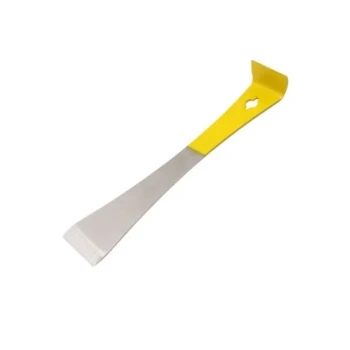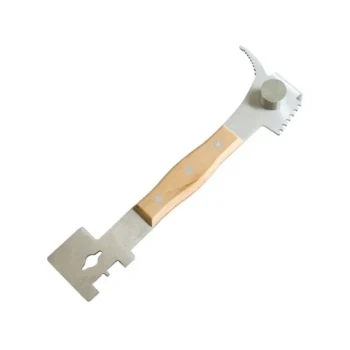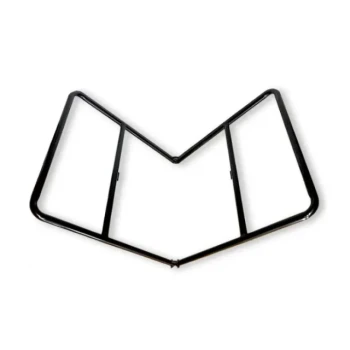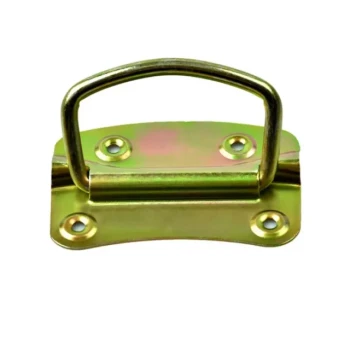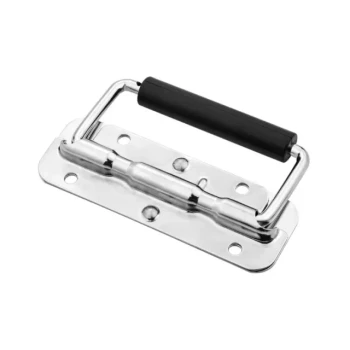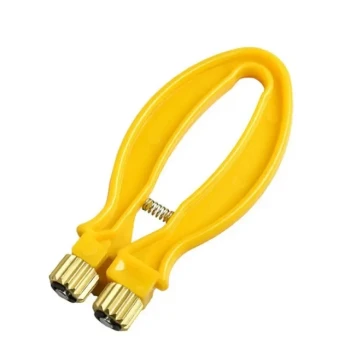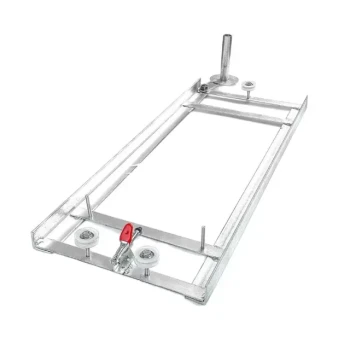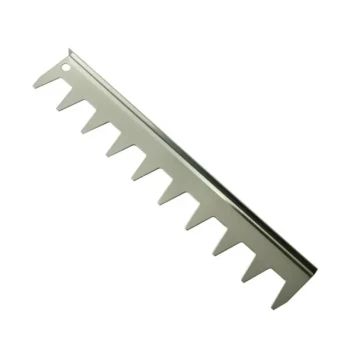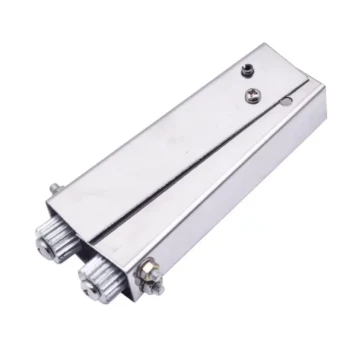When choosing a hive tool, the most critical factors to consider are its shape, size, and blade design. These three elements directly determine the tool's effectiveness for the core beekeeping tasks of prying apart hive components and scraping away unwanted propolis and wax.
The ideal hive tool isn't a single "best" model, but rather the one whose design best matches your specific tasks and physical comfort. Your goal is to find a balance between prying leverage, scraping efficiency, and safe handling.
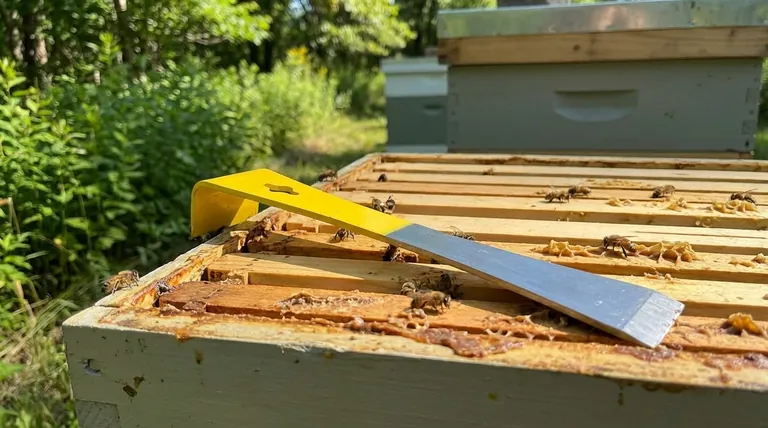
The Core Functions: Prying and Scraping
A hive tool is one of the most essential pieces of beekeeping equipment, serving two primary purposes from the moment you install your first package of bees.
Prying: Separating Hive Components
Bees use a sticky, resinous substance called propolis to seal every crack and gap in their hive. This "bee glue" makes it impossible to separate hive bodies, inner covers, and frames by hand.
The hive tool acts as a lever. By gently inserting the flat end between two components and applying pressure, you can break the propolis seal with minimal disruption to the colony.
Scraping: Cleaning Wax and Propolis
Beekeepers use the tool's edges to scrape away excess burr comb and propolis buildup on frames and hive bodies. This cleanup is essential for maintaining proper bee space and keeping the hive manageable for inspections.
Deconstructing the Hive Tool Anatomy
Understanding how each design element contributes to the tool's function is key to making an informed choice.
Shape and Functionality
The most common hive tool resembles a small, flat crowbar. This design is highly versatile.
The long, flat end typically has a sharp bevel, making it excellent for push-scraping and providing the leverage needed to separate stacked hive boxes.
The other end is often curved or bent at a 90-degree angle. This "J-hook" shape is ideal for pull-scraping and, most importantly, for hooking under a frame's top bar to lift it out of the hive body without crushing bees.
Size and Leverage
Hive tools come in various lengths. A longer tool provides greater leverage, making it easier to separate boxes that are heavily sealed with propolis.
However, a larger tool can also feel cumbersome, especially when working in tight spaces. The right size often comes down to personal preference and hand strength.
Blade Design and Width
The width and sharpness of the blade are critical. A thinner, sharper blade is better for slipping into very tight cracks and for precise scraping.
A wider, thicker blade offers more durability and breaking strength for heavy-duty prying tasks, though it may be harder to insert between tightly sealed components.
Understanding the Trade-offs
While simple in appearance, different hive tool designs present distinct advantages and disadvantages that you must weigh.
The Risk of a Sharpened Edge
Some beekeepers sharpen their tools to make scraping easier and to cut through unwanted drone comb or even small vines around the apiary.
However, a sharpened tool requires significantly more caution. It increases the risk of personal injury if mishandled and can more easily damage wooden hive components if used too aggressively.
Gentle Handling vs. Brute Force
The goal of any hive inspection is to work calmly and efficiently. Your tool should facilitate this, not hinder it.
Using a tool that is too small for a heavily propolized hive may tempt you to use excessive, jarring force, which agitates the bees. A tool that is too large or clumsy can make delicate tasks, like lifting a single frame, more difficult.
Making the Right Choice for Your Needs
Select your hive tool based on the primary tasks you expect to perform.
- If your primary focus is routine inspections and light cleaning: A standard, 10-inch "crowbar" style tool offers the best all-around versatility for a beginner or hobbyist.
- If your primary focus is managing multiple hives or breaking down old equipment: A longer, heavier tool will provide the necessary leverage to work efficiently without excessive strain.
- If your primary focus is delicate work like queen rearing or precise comb removal: A specialized, thinner tool may be more appropriate for its finesse and control.
Ultimately, your hive tool is an extension of your hand; choose the one that makes your work feel the most natural and effective.
Summary Table:
| Factor | Key Consideration | Impact on Task |
|---|---|---|
| Shape | J-hook vs. flat end | Determines prying leverage and scraping style (push vs. pull) |
| Size | Length and weight | Affects leverage for heavy propolis and ease of handling |
| Blade Design | Thickness and sharpness | Influences precision for scraping and durability for prying |
Ready to equip your apiary with the right hive tools? HONESTBEE supplies durable, precision-engineered beekeeping supplies and equipment to commercial apiaries and distributors. Whether you need versatile standard tools or heavy-duty options for large-scale operations, we provide wholesale solutions to enhance your efficiency and comfort. Contact us today to discuss your equipment needs!
Visual Guide
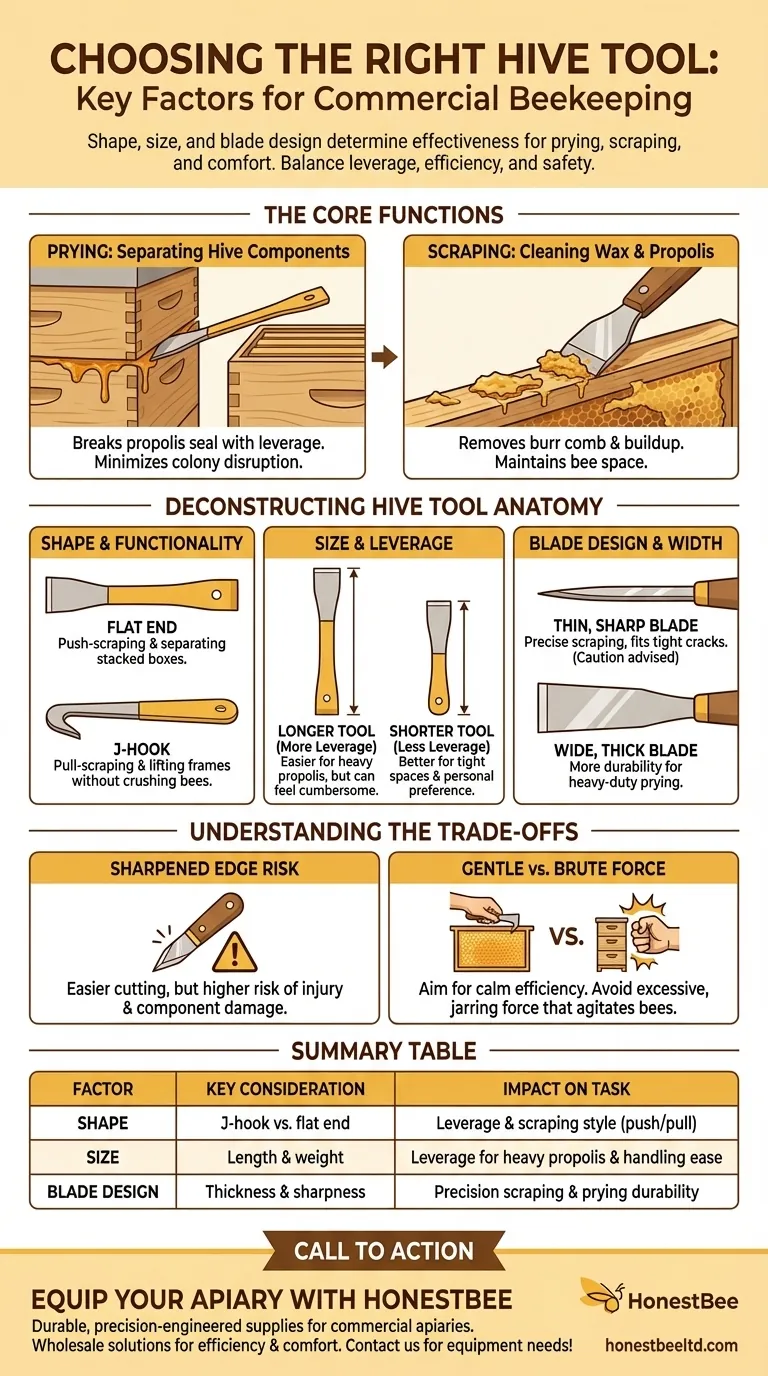
Related Products
- HONESTBEE Classic Pry Bar Hive Tool with High Visibility Finish for Beekeeping
- HONESTBEE Advanced Ergonomic Stainless Steel Hive Tool for Beekeeping
- HONESTBEE Professional Long Handled Hive Tool with Precision Cutting Blade
- Multi-Function Hive Tool with Integrated Hammer for Beekeeping
- Ergonomic Two Person Foldable Hive Lifter
People Also Ask
- How should frames be reassembled within the box to avoid squashing bees? Master a Gentle, Bee-Safe Technique
- What is the correct method for lifting frames with a hive tool? Master the Technique for a Calm Hive
- What are the uses of a hive tool in beekeeping? The Essential Multi-Purpose Key for Your Apiary
- What are the different types of hive tools available? Choose the Right Tool for Your Apiary
- What are some essential tools for beekeepers? Start Your Apiary with the Right Gear
